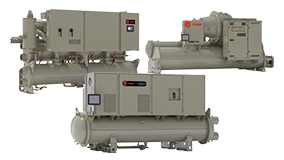Despite Curtailment Compliance, Crude Prices Continue to Struggle
August 11, 2017

In November 2016, the Organization of the Petroleum Exporting Countries, or OPEC, announced that it would start to curtail its crude oil production in January 2017 for the first time in nine years. Aimed at lowering global inventory levels and pushing crude pricing above $60 per barrel, the curtailment saw OPEC cut its production levels by 1.2 million barrels per day (MMbpd), or approximately 3.6 percent of OPEC’s November production levels. Non-OPEC producers led by Russia also agreed to reduce output by up to 0.6 MMbpd. The cut was originally set for six months (through June 2017) but was extended in late May to last through March 2018 at the same levels. Initially, the cuts appeared to be working as the price of Brent crude oil, the international benchmark price, surged from a low of $43.58 per barrel in mid-November to $58.37 per barrel on January 3.
Yet, despite a surprisingly high level of compliance for the initial six month period from both OPEC and non-OPEC partners, crude prices couldn’t push any higher than those seen in early January. So what halted crude’s rally? Let’s start with what has occurred in the United States. While OPEC and non-OPEC producers were lowering production, U.S. crude output has been growing. On January 6, U.S. production was 8.95 MMbpd. As of July 28, crude production had risen to 9.43 MMbpd, nearly 0.5 MMbpd of growth since the beginning of 2017. Going back to the last week of July 2016, crude production was 8.46 MMbpd, almost 1.0 MMbpd lower than current levels.
In addition to rising production, U.S. crude oil drilling activity, which can be seen as a measure of potential production growth in the coming 6-12 months, has been steadily increasing. Since bottoming out at 316 crude-directed rigs in May 2016, the number of rigs has soared to 766 as of July 28. Due to the nature of the drilling cycle, the addition of rigs doesn’t immediately equate to new production, but it does point toward continued growth in the coming months. Advancements in technology and improved efficiencies have allowed producers to reduce their well-completion times and remain profitable at lower and lower crude prices. In short, unless prices fall back to early 2016 levels, ongoing growth in U.S. crude production is likely.
OPEC, after curtailing as much as 1.28 MMbpd in May, only cut 1.1 MMbpd of production in June. Non-OPEC compliance continues to rise, but analysts are still not convinced that the current levels of compliance will remain. Crude oil is the economic lifeblood of many of the countries that agreed to cut production, and surplus global inventories have allowed some of these nations to reduce output without taking a major financial hit. But with global inventory levels now falling without prices reaching the desired $60-per-barrel level and U.S. production rising, analysts wonder if high compliance levels can remain. For example, Iraq, the third largest producer that agreed to a production cut behind Saudi Arabia and Russia, dropped its compliance level to just 28 percent in June. It had been as high as 86 percent in April. Kazakhstan is currently producing 145% of it’s agreed upon level while Nigeria and Libya, both OPEC members but exempt from cuts, have increased their production levels, offsetting much of the OPEC and non-OPEC declines.
Crude prices could still rally, however. A larger-than-expected decline in U.S. stockpiles over the past month coupled with the political crisis in Venezuela has helped push Brent crude back above $50 per barrel, an increase of more than 18 percent from its 2017 low seen in June. But as U.S. production continues to increase and compliance within OPEC becomes more difficult, global crude prices may struggle to reach the levels that OPEC had hoped for when the initial compliance deal was struck in November 2016.





































































































